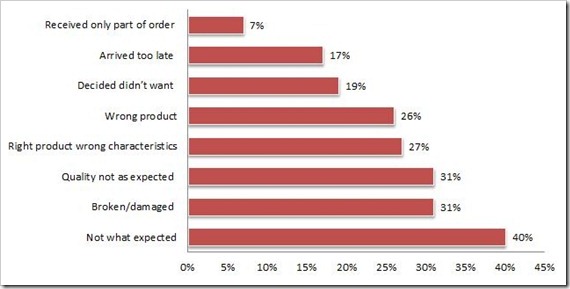Jabong has a No Questions asked 30 days Return Policy. Flipkart has a 30 days replacement guarantee. Yebhi has gone one step ahead and has a 100 days Return Policy.
E-commerce sites in India are going that extra mile to make customer experience count so as to ensure repeat purchase and word-of-mouth promotion. The money that has gone out of the marketer’s kitty to lure new customers can only be justified if the customer becomes a repeat buyer and / or gets new customers.
Under such a scenario, Return and Replacement Policy becomes pivotal. A recent study has found that 89% of online buyers say return policies influence their decision to shop with an e-tailer. Having a sound Reverse Logistics plan in place seems no more a luxury but a compelling need for e-commerce businesses in India.
While ecommerce logistics focus on delivering goods to a customer, reverse ecommerce logistics deal with getting the goods back from the customer.
In a survey conducted by PricewaterhouseCoopers LLP, customers were asked why they returned their product. Here are the findings.
Reason for Product Returns
(Note: multiple responses accepted)

Planning for the right Reverse Logistics strategy is actually a tight rope walk- you have to encourage your customers to buy on one hand and on the other hand you need to ensure that the overall profitability of your company is not affected.
Here are 8 important questions you need to ask yourself before you start formulating your reverse logistics plan:
1. The options that you will make available to your customer – Return, Refund, Exchange, Replace, Repair, etc.
2. If you are a multi-category e-tailer – what products will be covered in your Return and Replacement Policy?
3. In what condition will you accept the goods back?
4. Customer needs to send the goods or will you arrange for getting the goods collected?
5. Who will bear the Shipping and Freight charges?
6. Where the goods can be returned – head office, branch office, warehouse or to your offline store?
7. What is the time duration for allowing Returns – time between purchase by the customer to asking for a return?
8. What is the Lead time for the customer to get the final refund?
Remember that Reverse Logistics is no more a Supply Chain issue but it has the potential to affect your overall Branding and Customer Satisfaction levels.
[About the author : Shilpi Choudhury handles Marketing at DiscountPandit. She blogs on topics ranging from Startups to E-commerce to the Deal Industry. DiscountPandit is a Bangalore-based search engine for deals and product price comparison.]

[…] eCommerce portals are offering some crazy incentives and product prices. Some examples are 100-day return policy, step by step tracking of shipment, same day or next day delivery, interest free EMIs […]